Interview: artist Angharad Pearce Jones
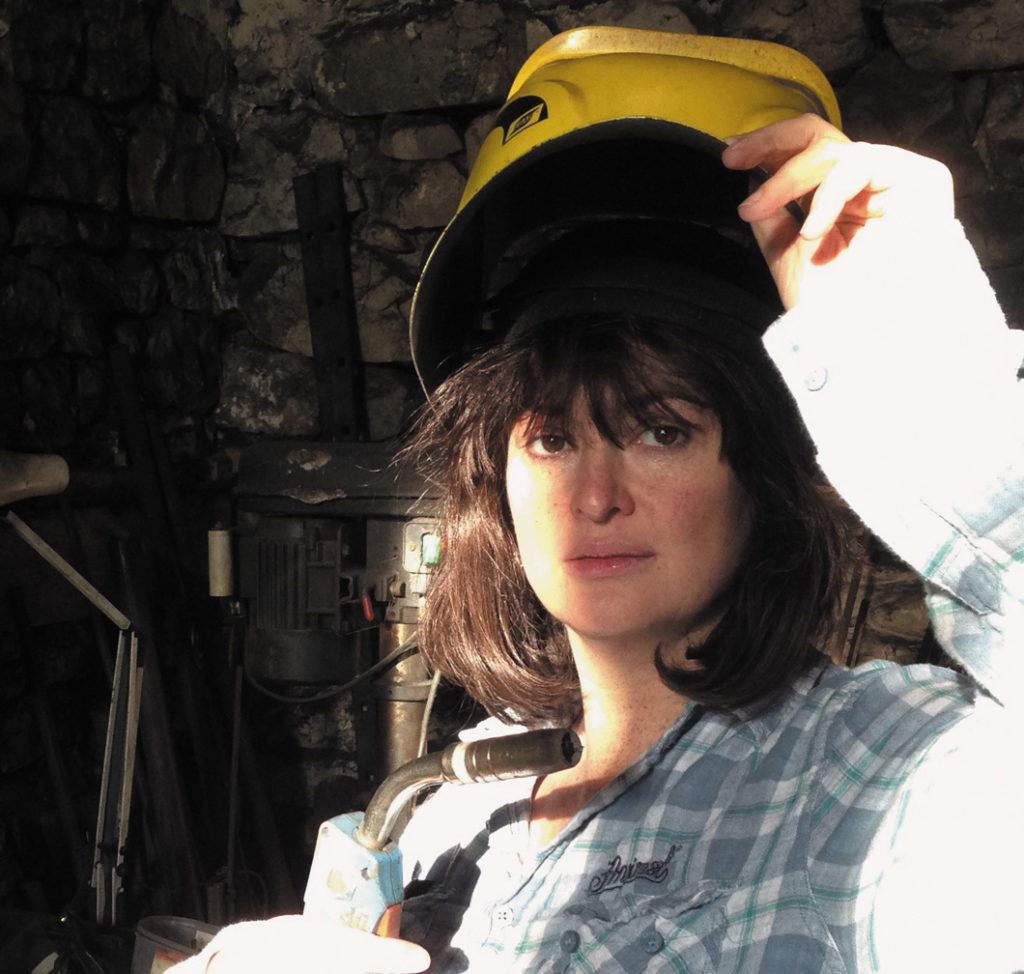
Jon Gower
Once you encounter the work of artist-blacksmith Angharad Pearce Jones you might never see railings in quite the same way again.
She is hyper-alert to them – to the gaps in the railings outside the school in Brynamman which her children used to attend, where the pupils would squeeze through.
Others dented or bent by cars as they crashed into them. Twisted, damaged railings all over the place. It’s a special way of seeing the world.
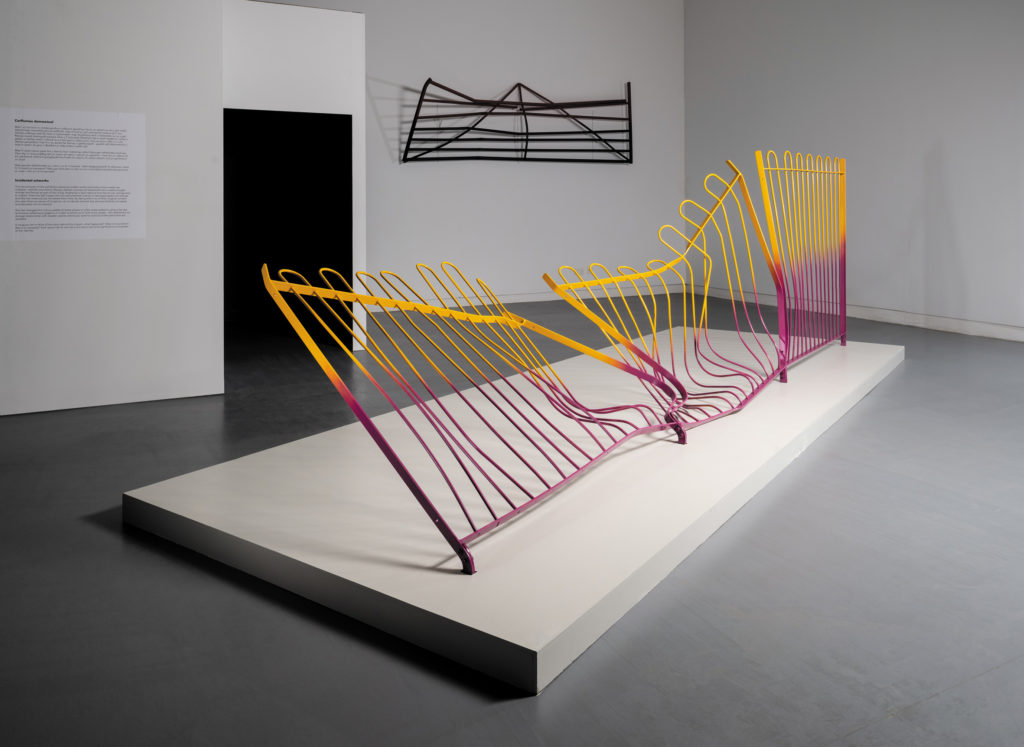
Dramatic
The seed of her latest show ‘IMPACTArdrawiad’ – and for the attendant book – was planted in quite a dramatic fashion. In 2016 Angharad went on holiday to Majorca ,where she forgot to drive on the other side of the road, so ploughed on towards ongoing traffic, which just missed her before she eventually swerved.
Later that same day she and her children went to Lidl, where they parked in front of some railings which were bent out of shape. It struck a chord, possibly because of the near-miss that morning, so she promptly photographed the railings from all angles. It was to be source material for Jones’ latest show in Aberystwyth.
Blacksmith
Jones, originally from Bala, studied for a Craft and Design degree in Brighton, then lived in Grangetown for many years. As a consequence many of the works in both the show and the accompanying book have their genesis in that part of Cardiff.
So when she goes to, say IKEA, she sees railings or box profile cladding. Indeed she sees metal shapes and metalwork everywhere she goes.
Angharad Pearce Jones has worked in steel for over 30 years, funding her artistic practice by working as a blacksmith and steel-fabricator. Now, in her largest solo show to date, she re-works an installation originally constructed in her own home during Lockdown.
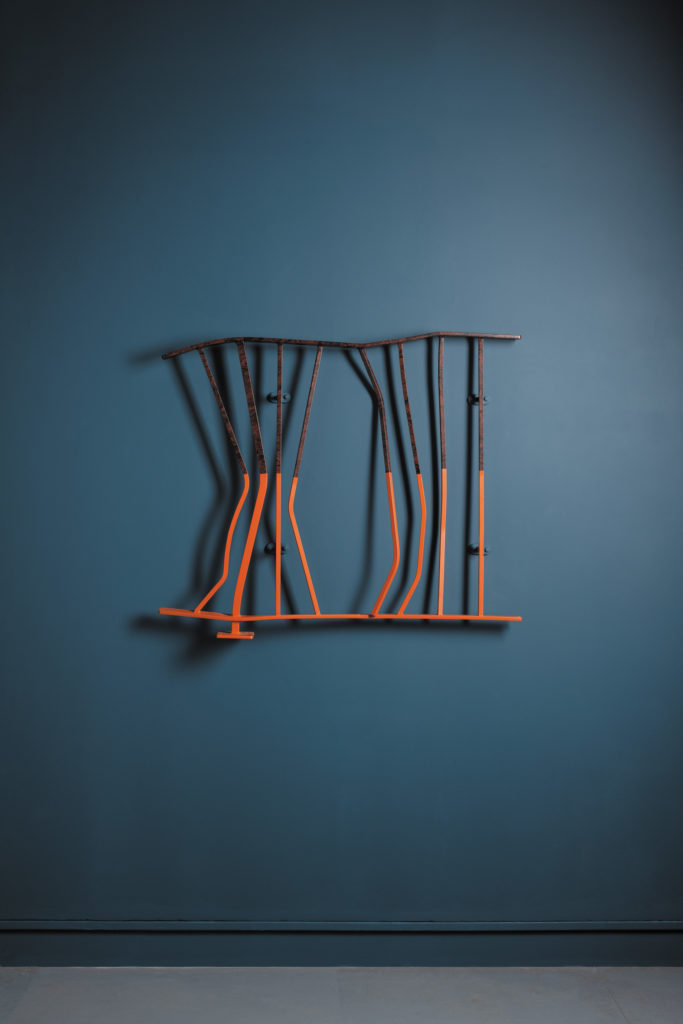
Jones maintains that ‘As an artist you never stop being an artist or a metalworker. As I drive around all of these things are my palette, the equivalent to a paint palette. I’m often visiting an industrial estate in Bridgend, for instance, where I’m often galvanizing metals or dropping things off and I see metal shapes all along the way.’
Division
There have been other car crashes as Jones sees them – two being Covid and Brexit – which have also shaped her recent work. ‘I really got that sense after Brexit that we really were divided as a nation, and more widely in Britain.
‘Because I couldn’t do any work in galleries as they were all shut because of the pandemic I built this work in my own home and it stayed up for about 24 hours. To make a cup of tea you had to go out the back door and then through the front door and the kids were not amused. This was the practice run for what became this work which is now in Aberystwyth.
‘As you come in the door I want people to really feel the sense of making a binary choice – yes we’re going to leave or no we’re going to stay. So what you see when you come into the gallery is a choice, are you going to take the left door or are you going to take the right, not knowing anything about what lies behind.
‘Once you get round the corner you’re separated from some of the other visitors. I’ve also introduced some of that box profile cladding you see on out of town industrial estates everywhere, like the ones in Bridgend, that aesthetic you see in every town all over Britain.’
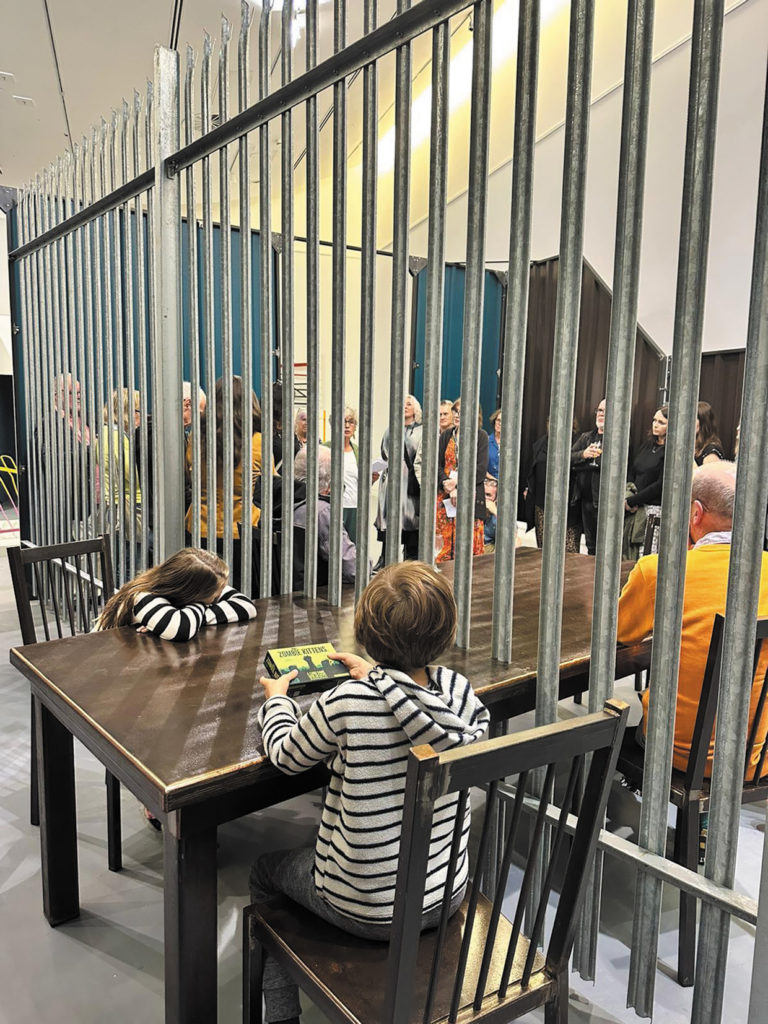
‘While the show’s been on it’s taken on a new life really because we had the war in Ukraine and in Aberystwyth there are lots of Ukrainian students and we had the Guardian cartoonist Martin Rawson dicussing fences so it’s led to a lot of discussion about what’s going on in the world – about separation, borders, both of which have been part of my work for some time.
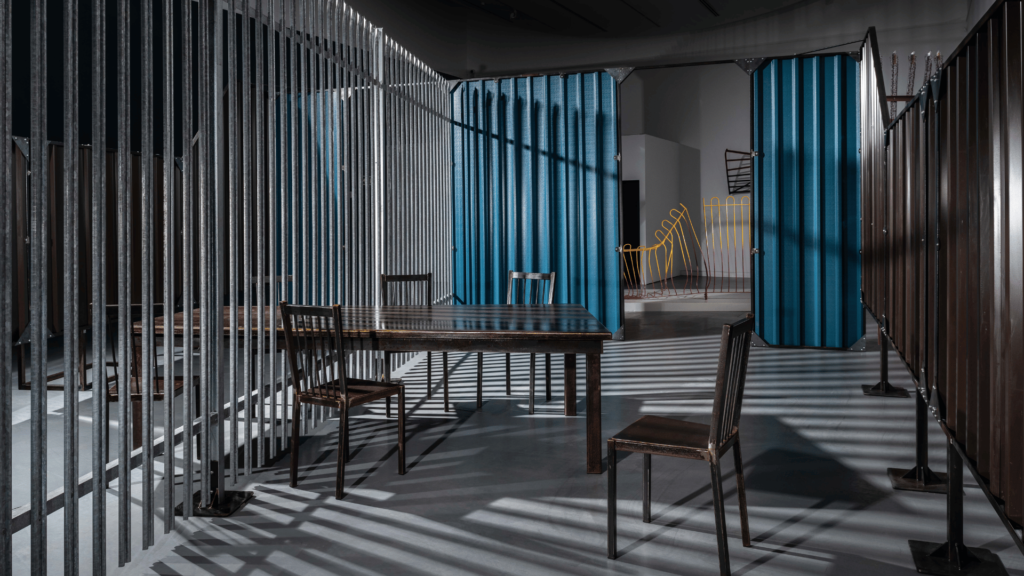
‘The table is based on the one in my own dining room but also, after every conflict there has to be a resolution, where people have sit down at a table across from each other. That significance wasn’t really apparent when I was making the work but afterwards when i looked at my own work I could see what was coming out here. On the opening night you could get the sense of people on one side and the other.’
Surveillance is another subject on show, or perhaps not on show. ‘Britain is one of the most watched societies in the world, apparently, with CCTV cameras everywhere, so I have a live CCTV on the outside as well so as you kove around the exhibition you’ll see that you’re being watched all the time, it gives you a sense of menace.
‘So the first part of the show is about choices and the impact a decision will have on your life – which way shall I vote, will I drink red wine or white wine, will I take my children across the world to try to seek refuge in another country? The second part of the show is about actual impact and scenes of impact.
‘During the past seven years I’ve been photographing these and then reproducing them exactly the same, to elevate them into something beautiful, into bits of sculpture.
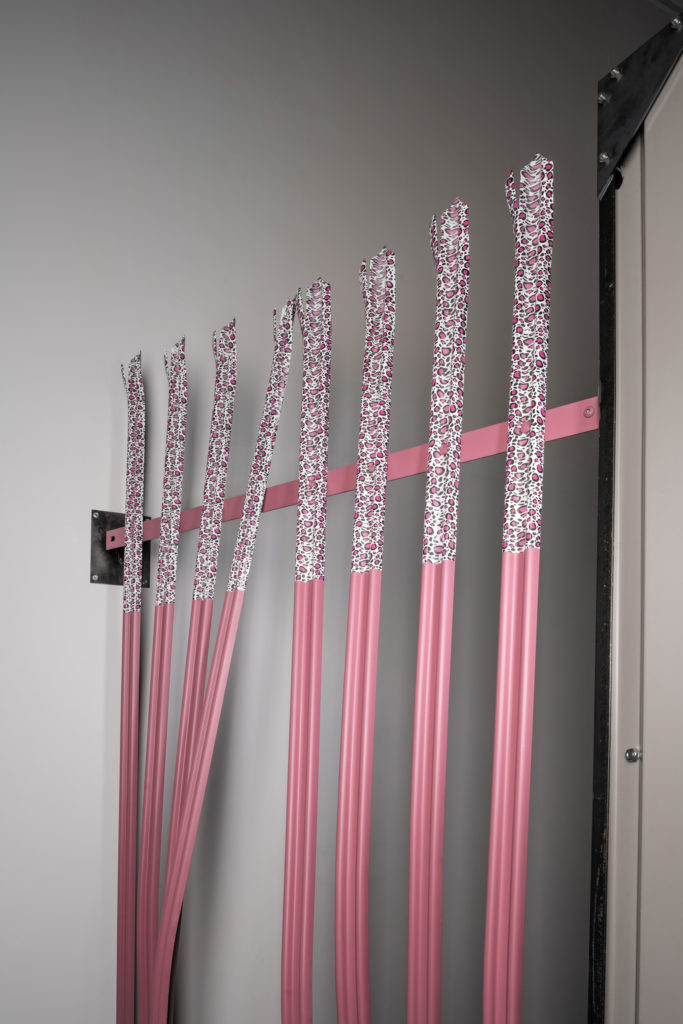
Aquagraphics
Jones has recently been employing what is, for her, a brand new technique, employing aquagraphics. ‘I found this amazing company based in Blackwood. You dip your metal and you can then paint it anyway you like, or leave some of the surface untreated to give a two-tone effect.
‘One such work is reminiscent of putting flowers on top of railings after an accident, which is why it’s a floral pattern. It’s the first one in the series in Aberystwyth and it’s in a room by itself. So it’s almost shrine-like and quite a quiet, sad space really, where you can reflect on the word “impact” with its dual meaning in English.’
Other works simply derive from Jones going about her daily life as a mother. Her son Bryn trains in Pontardawe football club and so she’s been parking in the same place for some ten years, where some railings are twisted out of shape. They serve as her inspiration.
‘A lot of people think I’ve taken railings away and put lots of lovely colours on them but I actually make exact reproductions of the ones I’ve found.’
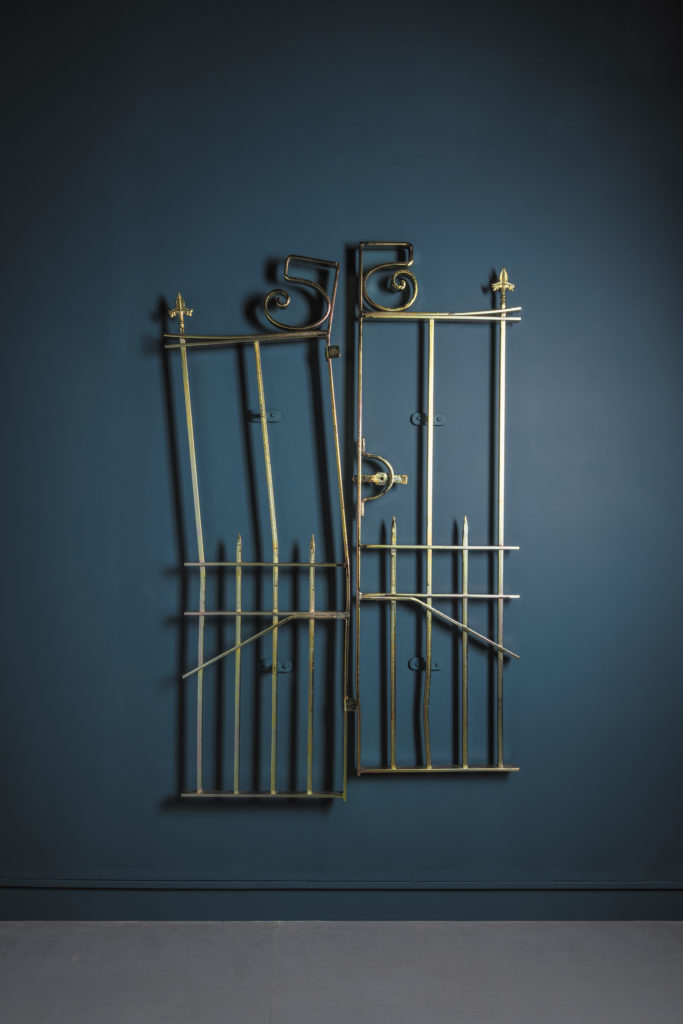
Railing stories
Jones suggests that what happens to the railings after they’ve been damaged tells us something about the differences between one country.
‘I asked my brother who lives in Munich to get me some images of such railings in Germany but he said they wouldn’t last 24 hours before they’d be replaced or repaired.
‘Then a Chilean lady I met in Pembrokeshire told me that in her home country they’d remain damaged forever but people would constantly talk about it and if you didn’t know what happened exactly you’d make a story about it. Often only the person who knocks into something really knows what happened.’
Turning accidents into sculpture, or twisted metal into beauty is part of Angharad Pearce Jones’ maker’s story, the ever-vigilant creator making sense of a damaged world in her tough, enduring and thoughtful art.
IMPACTArdrawiad is at Canolfan y Celfyddydau/Abertwyth Arts Centre until the 11th February 2024. The book of the same name is published by the H’mm Foundation and is available from all good bookshops.
Support our Nation today
For the price of a cup of coffee a month you can help us create an independent, not-for-profit, national news service for the people of Wales, by the people of Wales.




